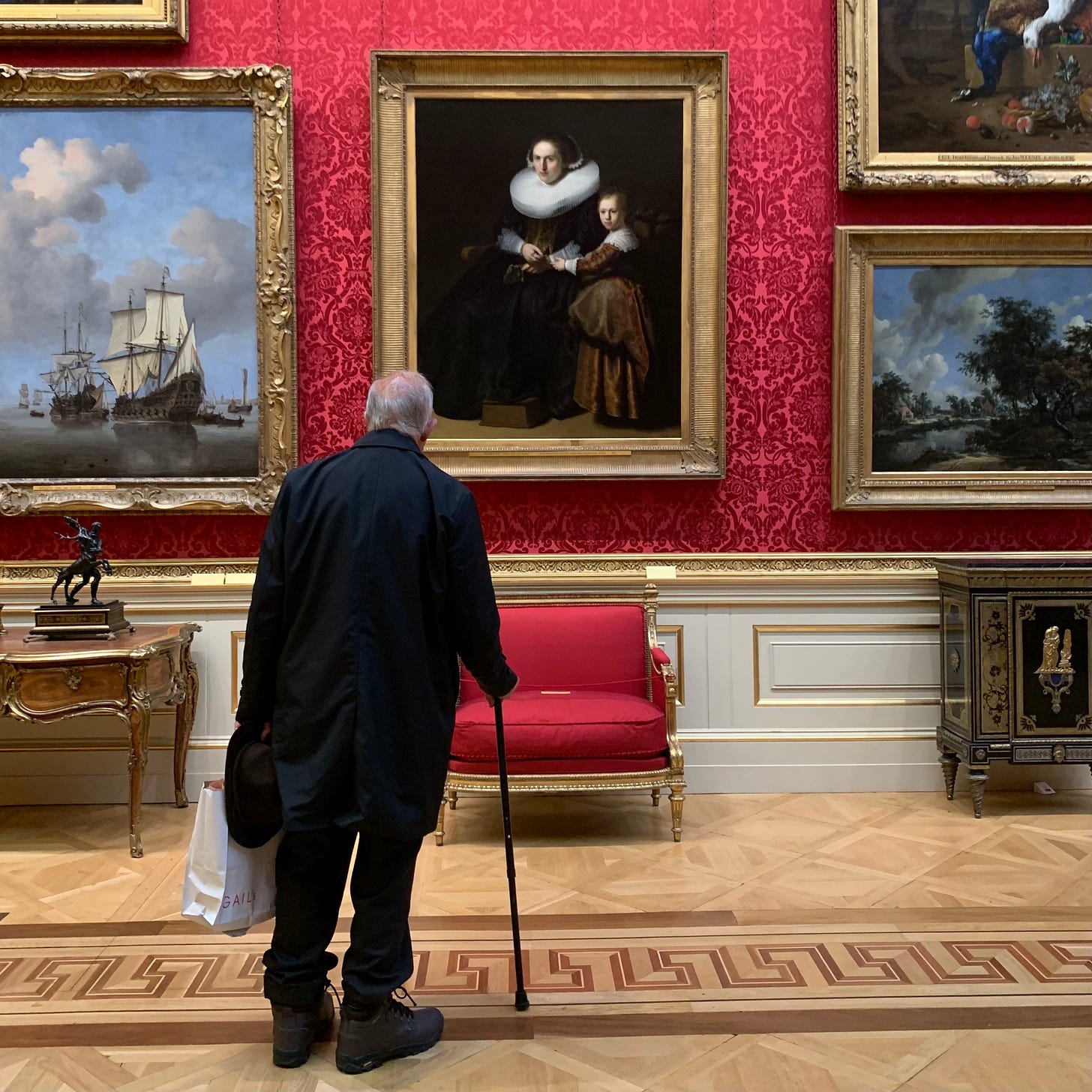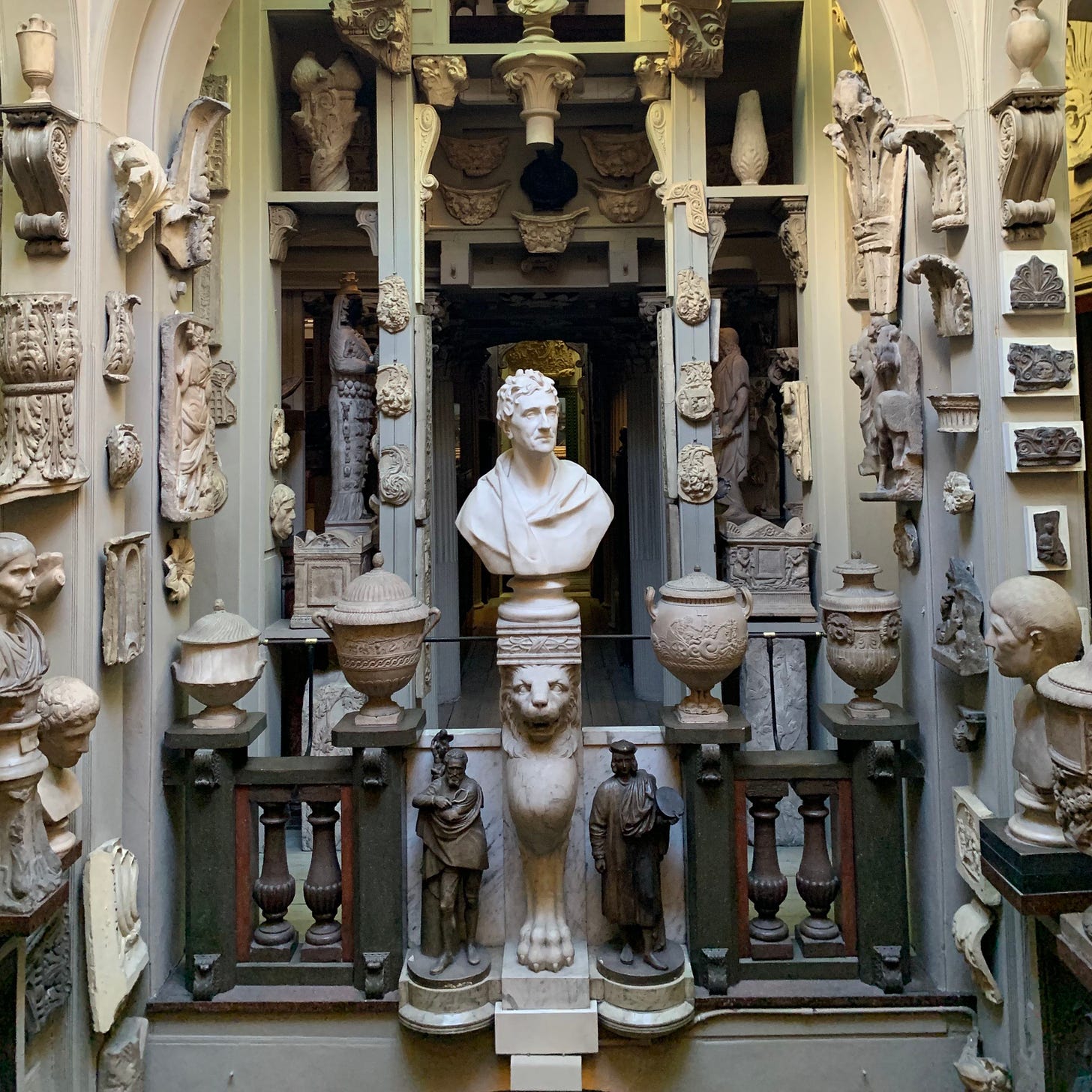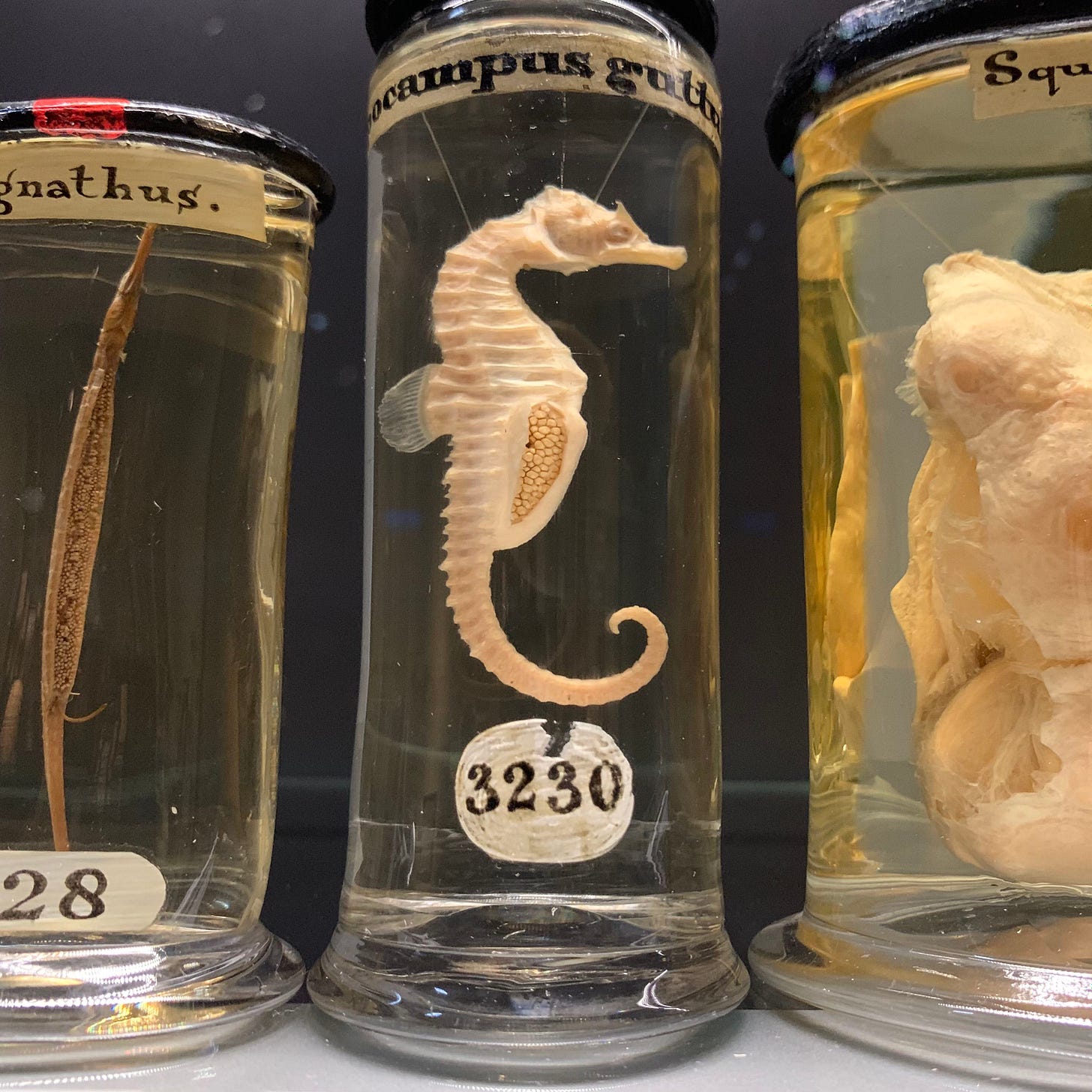Hello and welcome to Wooden City, a newsletter about London.
If you haven’t come here via @caffs_not_cafes, I'm a writer called Isaac Rangaswami and this is my Substack.
Every other week I publish an article about everyday places in London with unusual staying power, like shops, buildings, restaurants and public spaces.
Wooden City is a reader-supported publication and paid subscribers get much more. This includes access to maps, full articles and an archive of material covering over 200 places so far.
I love big museums, but sometimes they give me headaches. Their sheer volume of fascinating things depletes my brain power too quickly, so I end up breezing past more exhibits than I should. I used to feel guilty about this, but then I discovered that museum fatigue is normal.
This made me understand what is already obvious about places like the V&A and the British Museum: their immense size and variety are what make them so valuable. You could visit them a million times and leave with enough to see for a million visits more, so coming back never feels lazy or repetitive. There’s nothing wrong with enjoying them in small doses or skipping some collections, especially if you plan to return for years to come.
The other amazing thing about London’s big museums is that so many of them are free. In such an exorbitant city, this unconditional freeness is a rare and humongous gift, but the vastness of this cultural inheritance is also a crime. Some of London’s flagship institutions contain artefacts that were illegally and coercively taken from other countries. And while many in the cultural sector have cut ties with evil firms, the British Museum continues to accept huge sponsorships from fossil fuel corporations.
I’ve been going to some of central London’s smaller free museums lately, including those with clearer records, morally suspect sponsors and exhibits curated on imperial plunder. I chose museums that aren’t as big or famous because I thought they’d be easier to write about, but I was thrilled to find out that I was completely wrong: these places are just as rich as their colossal counterparts.
While their smaller size doesn’t necessarily make them more knowable, I hope I have at least captured what they are like. Further down the line, I plan to write similar guides to free museums in other parts of the city; in the meantime, I’ll be going back to the seven places below.
Sir John Soane's Museum
I see Sir John Soane's Museum as a living embodiment of what happens when a creative person with an overactive brain and a fancy town house expresses themselves fully. The fact that these ideas were brought to life 200 years ago, and are presented in line with their author’s wishes, is only partly why this museum is so extraordinary.
The house has the smoky oldness I’m always chasing – the smell that antique books and furniture have – because it is so full of both. I also like how it is crowded with beautiful objects that relate to people, like busts, gargoyles and the death masks that lurk around every corner. There are more domestic items too, including the cooking range used by the family who lived in the basement a century after Soane’s death.
The house has been restored over the years in a way that is invisible to the average visitor. A comparatively recent project by renowned architecture firm Caruso St John quietly introduced some new objects, designed to complement the house’s “meditations on space,” as Ian Nairn called them. Maintenance will continue forever: I heard an attendant say they clean it every Tuesday.
Nothing beats standing among the horde of sculptures in the natural light-filled dome area, where you can look down into Seti I’s sarcophagus. It was here that an enthusiastic attendant told me that Soane got the 3000-year-old coffin inside by knocking through a wall. I asked him if Soane was an improviser and if the house evolved organically, at which he visibly winced. He told me Soane was more of an opportunist, with a master plan that he enacted through bursts of energy at different stages of his life. He compared him to a rabbit hunter, carrying all the right equipment, poised to act whenever two floppy ears came into view.
13 Lincoln's Inn Fields, London WC2A 3BP
Hunterian Museum
The Hunterian and the Soane are minutes away from each other on either side of Lincoln's Inn Fields, but they couldn’t be more different. John Hunter dealt in flesh and blood rather than stone and bricks; his life’s work as an anatomist and surgeon sits behind glass, in a recently revamped big-budget space.
On my first visit I saw sea slugs, larynxes and the late-stage embryo of a duck, its half-developed plumage frozen in time. I saw fetuses, a seahorse, gunshot wounds, the vastly inflated foot of someone with elephantiasis. Children come here with parents, and both types of visitor are regularly grossed out and disturbed. The museum's curators are open about the fact that many of its specimens were probably grave-robbed, and about the emotions that human remains can evoke.




